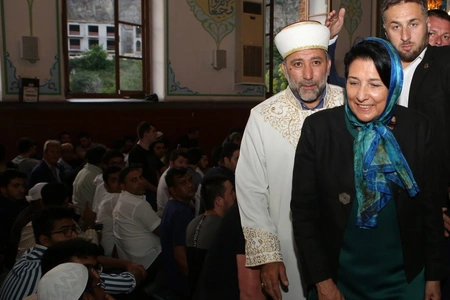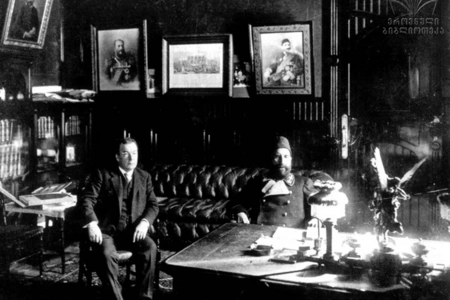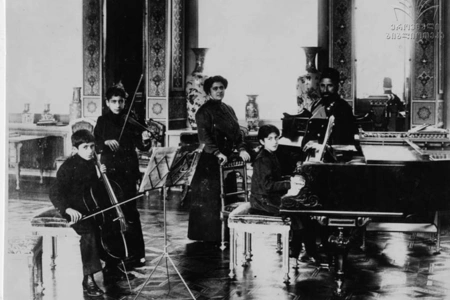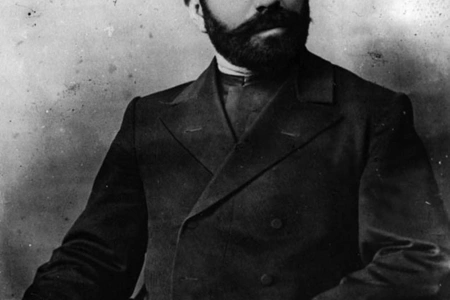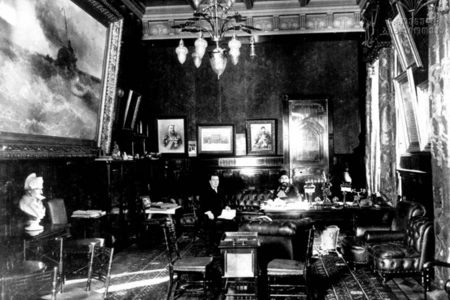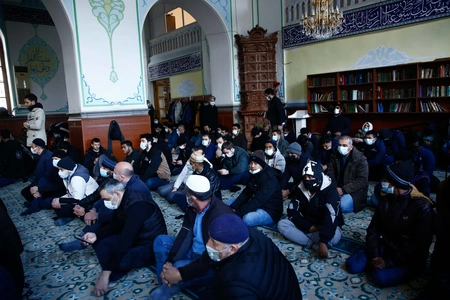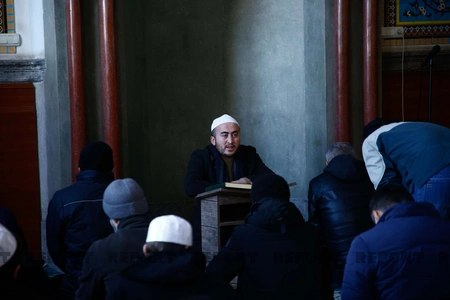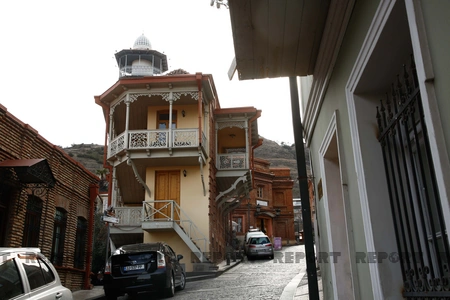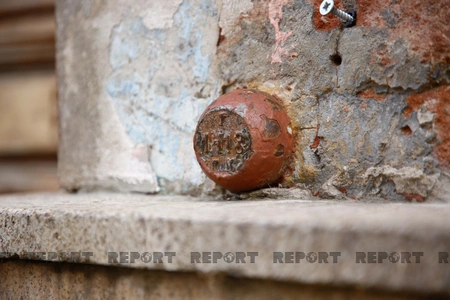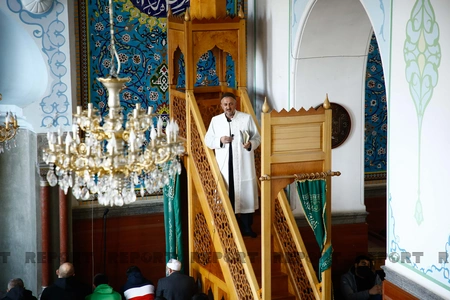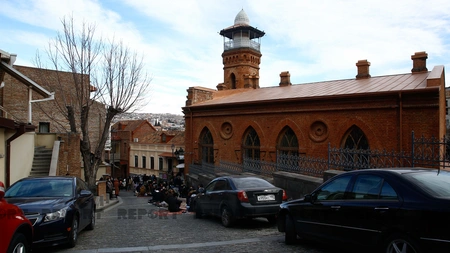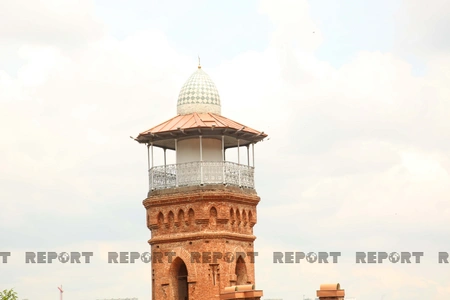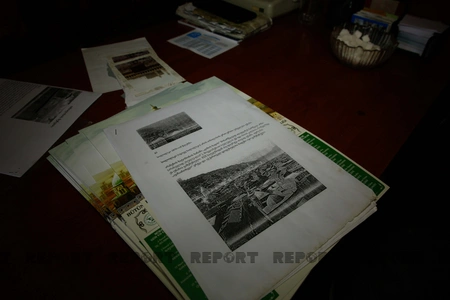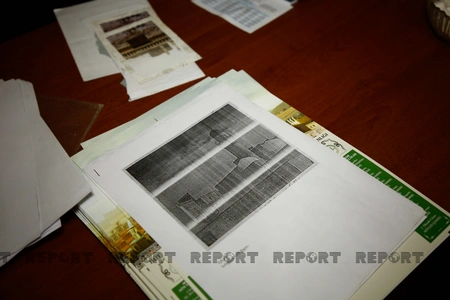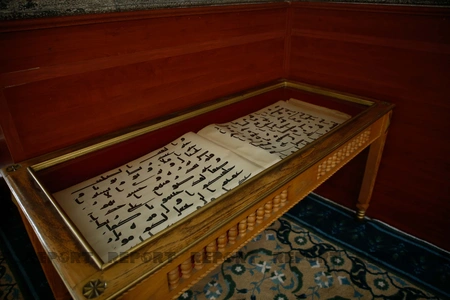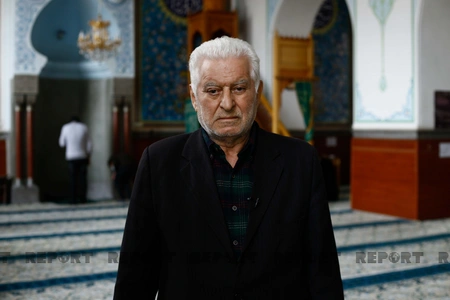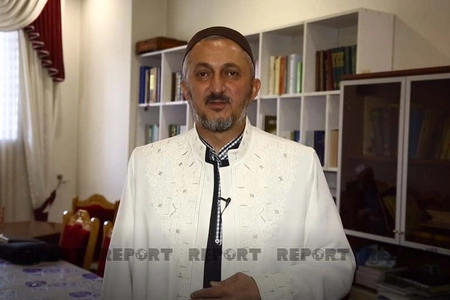Haji Zeynalabdin Taghiyev's philanthropy in Tbilisi
- 05 February, 2022
- 07:04
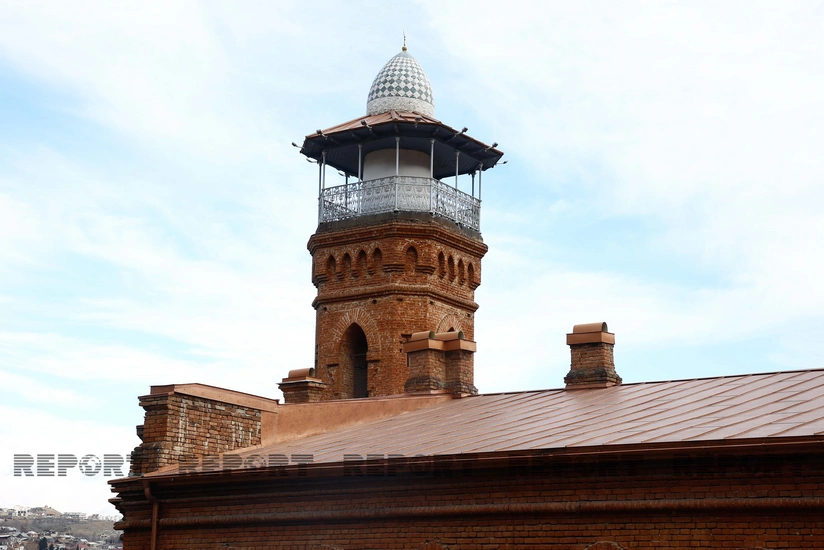
The charitable activities of the prominent Azerbaijani philanthropist, and public figure Haji Zeynalabdin Taghiyev went beyond the borders of Azerbaijan.
President of Azerbaijan Ilham Aliyev paid special attention to the unveiling of the monument to the philanthropist erected in Baku on January 18, noting that Tagiyev's educational initiatives were not limited to Baku. He noted that schools were opened at the expense of the philanthropist in Georgia's regions where Azerbaijanis live.
Report has studied the philanthropist's charitable activities in Georgia. The first study was dedicated to the Tbilisi Juma Mosque, which Taghiyev helped build.
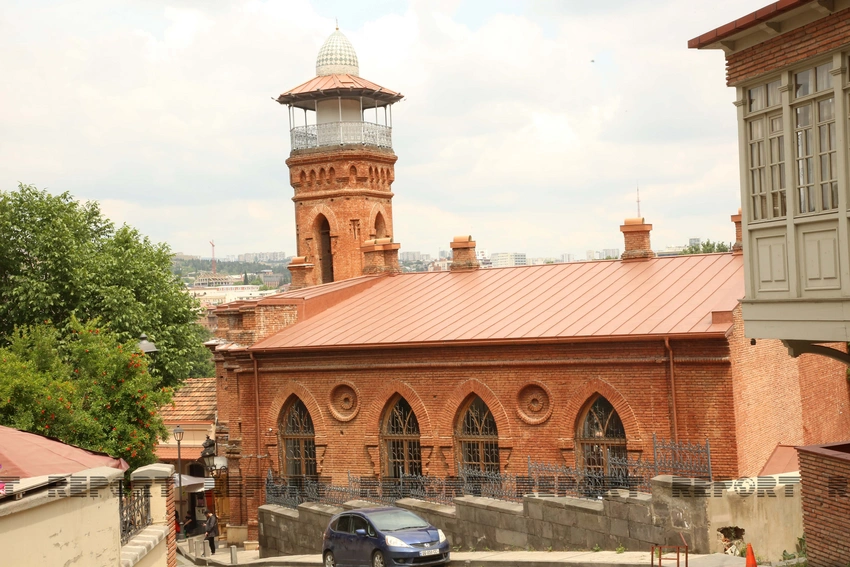
Georgian researcher-translator Mirza Mammadoglu's book "Ancient Tbilisi" tells about this aid: "Haji Zeynalabdin Taghiyev, a well-known millionaire in the Muslim world, visited the Juma Mosque in Tbilisi (Georgia) and made a donation to complete its construction."
Unfortunately, there is no information about this assistance in Georgian sources. We decide to visit the Juma Mosque to learn more about the philanthropist's donation. Our visit coincides with the day of Friday prayers, when it is crowded around and inside the mosque.
First, let's take a brief look at the mosque's history.
A unique temple
There were several mosques in ancient Tbilisi. The foundation of the Juma Mosque was laid in the late 19th century. The place of worship is said to have been designed by Italian architect Giovanni Scuderi. The area of the mosque was significantly expanded in 1864.

According to some sources, reconstruction work was carried out in 1889 to reinforce the mosque building.
Tbilisi Juma Mosque is unlike other mosques in the world. What makes it unique is both the construction style and the fact that Shiites and Sunnis worship together here. The brick building shows a mixture of Islamic and Neo-Gothic architectural elements and mosaic patterns. The octagonal minaret of the mosque attracts particular attention in the view of the old historical part of Tbilisi.
The Georgian government considers the mosque as the brightest indicator of tolerance in the Caucasian country and presents it to the world. During the visit to the Tbilisi Juma Mosque during the Ramadan holiday in June 2019, President Salome Zourabichvili stressed that the mosque is the only religious place where Shiites and Sunnis pray together. She noted that this tradition of tolerance has historically existed in Tbilisi and continues nowadays.
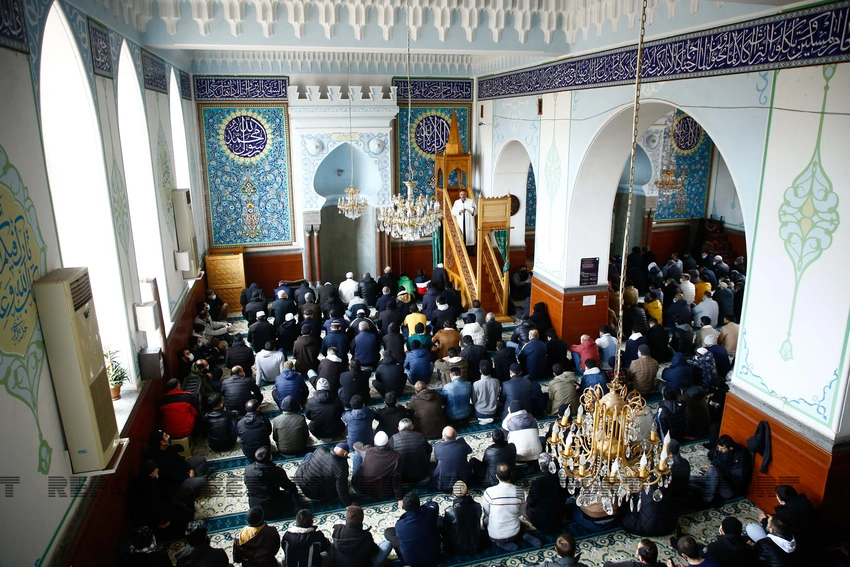
Earlier, the mosque belonged to the Sunnis. After the demolition of the Shiite Shah Abbas Mosque in Tbilisi in 1951 due to the construction of the Metekhi Bridge, the Juma Mosque brought together followers of both sects. In the past, a black curtain hung as a partition between Shiites and Sunnis to pray in the mosque. At present, two items saved from the Shah Abbas Mosque - the pulpit and the ancient Qur'an - are preserved in the Juma Mosque as a valuable symbol.
Taghiyev was one of the biggest contributors to the Juma Mosque
Upon entering the mosque, you come across an inscription with brief information about the place of worship in the Azerbaijani language. This is a piece of information posted on Wikipedia in the Azerbaijani language.
We talked to the director of the mosque, Tahmaz Hasanov about the question of whether there is detailed information about Taghiyev's help. Hasanov, who has worked at the mosque for nearly 30 years, is known for his knowledge of Tbilisi's history.

Tahmaz Hasanov recalls that he was told about the financial support provided by Haji Zeynalabdin Taghiyev for the construction of the mosque.
"Taghiyev was one of the biggest contributors to the Juma Mosque. The mosque was built in 1811, and in 1864 Taghiyev helped expand it. The current mosque once belonged to the Kazan Tatars. According to what I was told, while Taghiyev was at the Shah Abbas Mosque, the Mufti and imam of the current Juma Mosque met with him and asked for help. Taghiyev reportedly gave a bag of gold as aid. He is also said to have helped build the mosque's minaret. It is said that the millionaire stipulated that the height of the minaret should be 27 meters. Its condition has been fulfilled and the current height of the minaret is 27 meters," he said.
At this point, it is worth mentioning a fact that confirms Haji Zeynalabdin Taghiyev's connection with the Shah Abbas Mosque in Tbilisi. Let's look at this paragraph in the book "Contemporaries about Haji Zeynalabdin Taghiyev" published by ANAS in 2013:
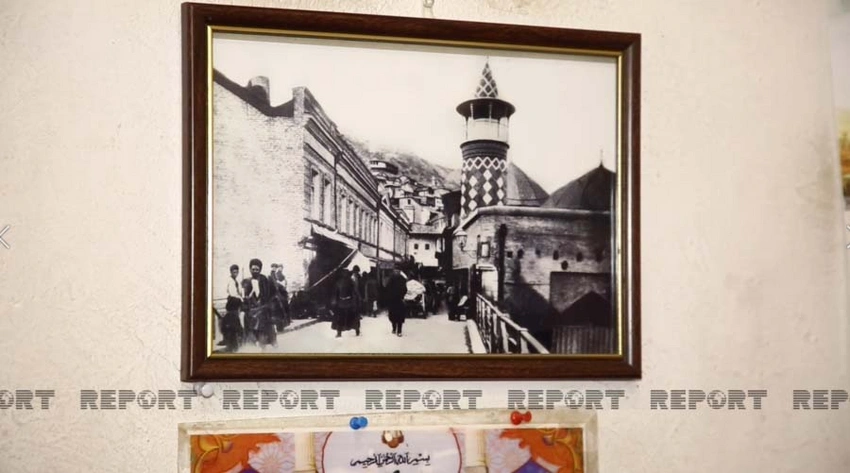
"In 1903, another book dedicated to Haji Zeynalabdin Taghiyev was published. The author of the essay 'Biography of Mr. Haji Zeynalabdin Taghiyev, famous for his wealth and generosity' published in the First Printing House of Baku in Azerbaijani and Persian languages is not known. The compilers of the book 'Haji Zeynalabdin Taghiyev,' published in 1993, Abulfaz Hashimoglu, Akram Bagirov and Pasha Aliyoglu believe that the work was written by a well-known intellectual, religious figure Akhund Yusif Talibzade. Akhund Yusif Mustafa oglu Talibzade (1877-1922) was an enlightener and religious figure. He studied in Tbilisi (Georgia) and Mashhad, was appointed akhund of the Shah Abbas Mosque in Tbilisi (Georgia), but did not work in that position because he was invited to Baku by Haji Zeynalabdin Taghiyev. From 1900 he worked as a teacher in Russian-Azerbaijani schools."
God Himself commands us to repair the house of God
Our other interviewee was Haji Etibar Eminov, a representative of the Georgian Muslim Board and Mufti of Eastern Georgia. He first explained the concept of charity from an Islamic point of view.
"In general, Islam is a religion of charity. Let's pay attention to the word of a verse. Our God commands us to spend what we have been given. In other words, every Muslim knows that all the material possessions in the hands of human beings belong to God, and therefore he always continues to be charitable. In charity, a Muslim does not care what religion, sect or race people belong to. He tries his best to help all people in need, even all living beings in addition to humans. As the Georgian Muslim Board, we also try to follow the command of our God and try to help as much as we can every year," he said.
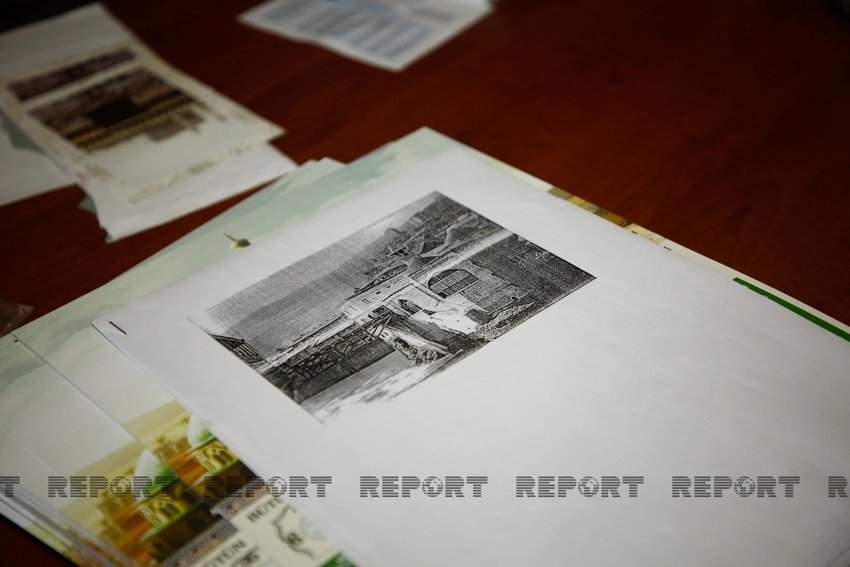
The Mufti noted that the financial assistance allocated for constructing places of worship was highly appreciated: "In the Qur'an, God Himself commands the repair of a temple, which is the house of God. Blessed are those who help build the temple of God. In another verse, God says that those who hinder the construction of God's temples are tyrants."
According to the cleric, the Tbilisi Juma Mosque is the centre of the Georgian Muslims: "This place of worship is a symbol of Muslims not only in Georgia, but also for tourists. I would like to take this opportunity to thank those who worked hard to build this mosque in the past, and I wish our future generations to learn from them so that they can build such mosques throughout history and acquire merit in God's sight, Inshaallah."
Other generous gestures of the millionaire in Tbilisi
The representative of the Juma Mosque Tahmaz Hasanov added that Haji Zeynalabdin Taghiyev provided more aid in Tbilisi.
"Taghiyev did great deeds in Tbilisi. The first of them was helping the Anjuman school. The school is located behind the current museum of Mirza Fatali Akhundov. Now the building has been renovated and completely changed,"
The head of the mosque noted that the philanthropist did not spare financial support for the construction of a church in Tbilisi and the repair of the Musthaid Garden.
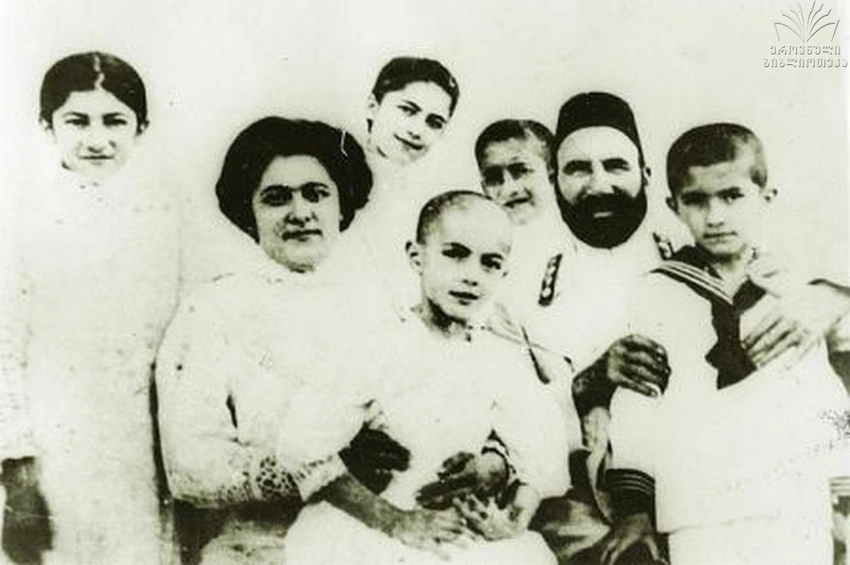
It is noteworthy that Haji Zeynalabdin Taghiyev was an honorary supervisor of a Muslim school in Tbilisi (Georgia). It can be assumed that this educational institution was a madrasah opened under the Tbilisi Juma Mosque. Thus, the philanthropist opened schools under a factory in Baku and the Juma Mosque in Shamakhi. Information about the activities of the religious school under the Tbilisi Juma Mosque is also included in the collection "Caucasian Calendar" of 1850.
According to the extract from Manaf Suleymanov's book "What I heard, read, saw" in the above-mentioned "Ancient Tbilisi" publication, the philanthropist also built a factory in Tbilisi: "Haji Zeynalabdin Taghiyev sends Alasgarbay Mahmudbayov to Tbilisi to monopolize the textile industry in Transcaucasia, rents land on Mikhailovsky Street there, builds a factory and begins to produce cloth; this factory was also supplied with raw materials - cotton by the western cotton-growing districts of Azerbaijan; AT the same time, because the factory was close, less money was spent on transportation, and the fabric was cheaper."
The book 'Ancient Tbilisi' emphasizes that the cloth produced by this factory was also sold in the shops of ancient Tbilisi."

Let's look at the information about the identity of Alasgarbay Mahmudbayov (1875-1968) in the "Contemporaries about Haji Zeynalabdin Taghiyev" book.
"He graduated from the Baku Realni School and the St. Petersburg Polytechnic Institute. After graduating, he worked at Haji Zeynalabdin Taghiyev's weaving factory and became the factory's director. He moved to Tbilisi in 1908 and took an active part in the work of the Caucasian Muslim Charity Society. He was one of the 26 members of the National Council of Azerbaijan who signed the Declaration of Independence on May 28, 1918. He went to Turkey in 1918 and headed a textile factory in Adana. He later moved to Cairo, where he spent the rest of his life."
According to the publication, at the expense of the great enlightened Haji Zeynalabdin Taghiyev, along with many cities, a large number of needy people were educated in Tbilisi. Among them are two well-known women who received their first education in Tbilisi - the first Azerbaijani professional female singer Shovkat Mammadova and enlightened Salima Yagubova. Thanks to the philanthropist's scholarship, both of them were able to continue their education and become the first in their fields. Shovkat Mammadova studied in Milan and Salima Yagubova in the Higher Pedagogical Courses named after Bestuzhev in St. Petersburg.
Apparently, Haji Zeynalabdin Taghiyev's charitable activities in Tbilisi had a wide scope. The Georgian bureau of Report continues its research on the subject.


